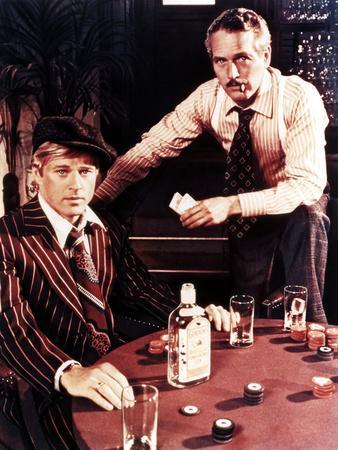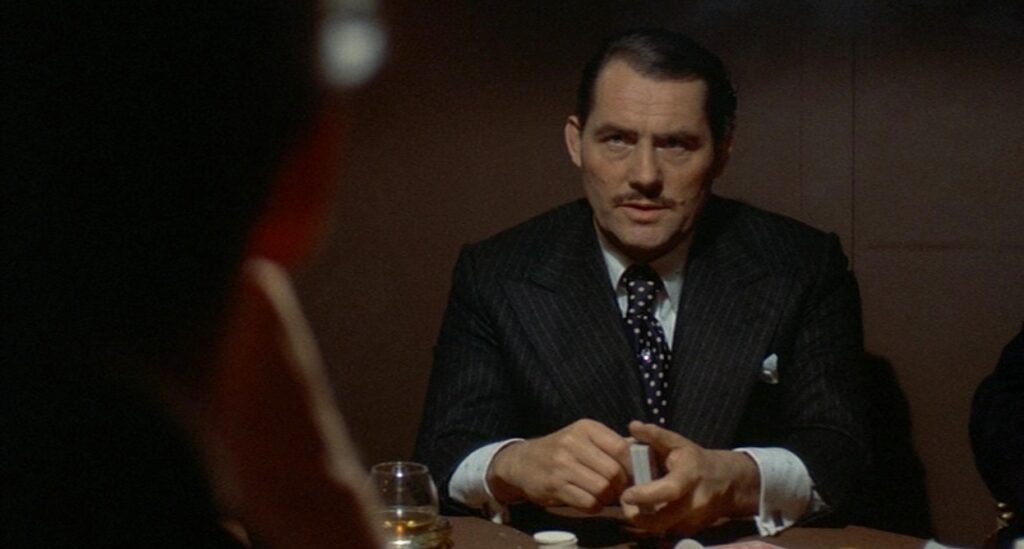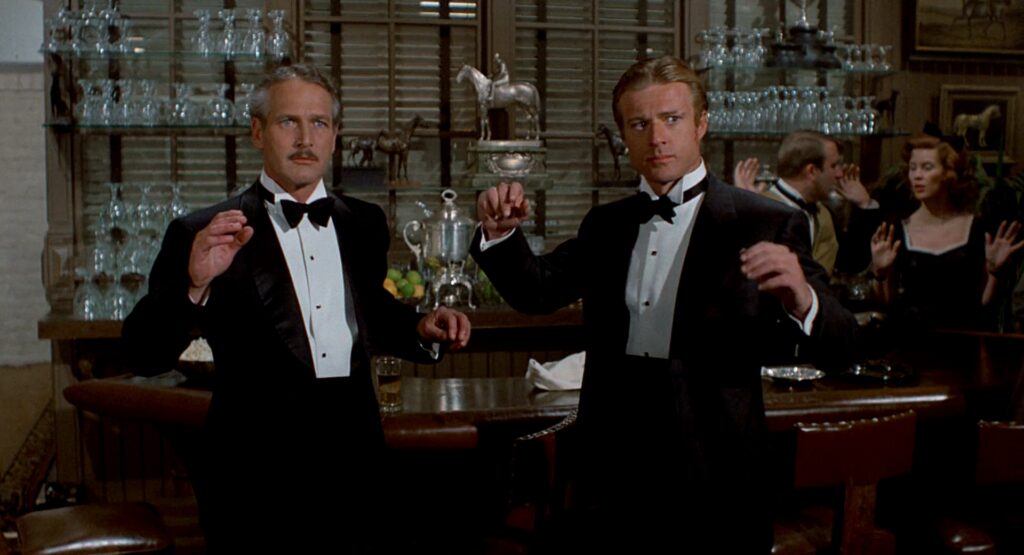The Sting (1973)

DIRECTOR: George Roy Hill
CAST: Paul Newman, Robert Redford, Robert Shaw, Charles Durning
REVIEW:
The Sting is a sort of grandfather of movies like Ocean’s Eleven; a slick glossy piece of entertainment with a twisty-turny crime caper plot and populated by some popular and photogenic movie stars getting back together and having some fun. Reuniting co-stars Paul Newman and Robert Redford and director George Roy Hill from 1969’s Butch Cassidy and the Sundance Kid and written by screenwriter David S. Ward, inspired by real-life cons perpetrated by brothers Fred and Charley Gondorff and documented by David Maurer in his 1940 book The Big Con: The Story of the Confidence Men, The Sting is an entertaining and enjoyable cinematic exercise that goes on its tangled way with slick assurance and panache, serving up plenty of “keep you guessing” twists and turns and reveals along the way.
In 1936 Joliet, Illinois, amid the Great Depression, slick young grifter Johnny Hooker (Robert Redford) and his partner Luther Coleman (Robert Earl Jones) net a big payday when they con $11,000 out of an unsuspecting mark. But complications ensue when it turns out their latest target was a courier for ruthless bigtime Irish-American mobster turned “respectable” banker Doyle Lonnegan (Robert Shaw), who doesn’t take kindly to people stealing from him. It’s not long before Luther takes a fall out a high window and Johnny is fleeing to Chicago with goons after him and revenge on his mind to seek out Henry Gondorff (Paul Newman), who can supposedly teach him “the big con”. Johnny’s confidence is not inspired when the legendary Gondorff turns out to be a drunk hiding from the FBI in a brothel, but it’s not long before the older man cleans himself up and takes the kid under his wing and an elaborate con is set in motion. The target: none other than Doyle Lonnegan. The con is too convoluted to describe (or spoil) here, but it involves first entering a high-stakes poker game with the mobster on a train ride from New York to Chicago, then luring him into an elaborate scheme involving a phony betting parlor. There’s also a nasty crooked cop, Lt. Snyder (Charles Durning), who’s pursued Johnny to Chicago, and an FBI agent (Dana Elcar) out to get Gondorff, who may or may not be what he says he is, and an unseen sinister figure who starts shadowing Johnny around town. Soon, there’s twists and turns and double-crosses (or are they?) and surprise reveals, all building up to the climactic last act of the elaborate con game…”The Sting”.

The primary pleasure of a movie like The Sting is following the twists and turns, and reveals that are sometimes undone by another reveal, and David S. Ward’s screenplay does a nice job of being twisty-turny and complicated enough to keep us unsure of exactly what’s going on at various points of the movie without being so labyrinthine that it’s impossible to follow. The other pleasures are savoring the handsome stylish production and costume design (the movie does a believable job taking us back to 1936 Chicago, with lots of period cars and fancy suits, accentuated by a ragtime soundtrack. Hill employs wipes and irises and images that turn like pages, and chapter titles delineating each phase of the con with title cards recalling Norman Rockwell’s Saturday Evening Post covers. Hill and Ward delight in stocking the movie with 1930s noir types: the veteran con man, the cocky rookie, a swaggering gangster, a dirty cop, ambiguous dames. The con itself is an elaborate and complex scheme indeed, involving a betting parlor that’s actually a theatrical set, populated entirely by actors, and that’s not even getting into the improvisations the cast of con artists are forced to come up with on the fly. And that’s not even getting into the crooked cop who keeps turning up, almost in a darkly semi-comedic running joke, like a bad penny at inopportune moments, or the FBI agent who may or may not be what he seems, or the waitress/semi-love interest (Dimitra Arliss) who may or may not be what she seems, or the double cross that may or may not be what it seems. The Sting is the kind of movie that tempts one to rewatch with the benefit of hindsight, now knowing what was really happening and what was part of the con, but then again, trying to make guesses along the way is part of the fun.

Last but not least among The Sting‘s pleasures is watching two classic movie stars, Paul Newman and Robert Redford, do their thing. This might not be the stuff of deep character development, but Newman and Redford’s easy chemistry and camaraderie established as Butch and Sundance carries over here, and each is individually handsome and charismatic and capable of moving smoothly between light drama and light comedy. This isn’t entirely a comedy—after all, Johnny is motivated by revenge on Lonnegan for the murder of his partner—but it’s not taking things too seriously either. Robert Shaw is suitably menacing, and part of the tension is that it doesn’t make Lonnegan overly buffoonish; several times Johnny and accomplices are forced into improvisations on the fly to keep him fooled, and we don’t doubt he’ll have them killed if he ever manages to figure out what’s actually happening. Charles Durning is suitably nasty as the secondary villain, and other supporting roles include Eileen Brennan as Gondorff’s right-hand woman/lover, Ray Walston (who would later be known as Fast Times at Ridgemont High‘s humorless Mr. Hand) as one of their accomplices, and Robert Earl Jones (father of James Earl Jones) as Johnny’s first partner.
Along with the likes of Ocean’s Eleven, The Sting isn’t the deepest or most substantial cinematic experience, or is it trying to be; it’s a slick, glossy slice of entertainment with stylish production design, photogenic and charismatic movie stars having fun, and a few twists and turns. But it goes on its convoluted way with panache and self-assurance and a sense of genial good-natured humor, and that all adds up to a couple hours of slickly-crafted entertainment whose twists and turns we don’t mind following.
* * *